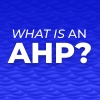Self-Funded (Self-Insured) Association Health Plans
What Is a Self-Funded Association Health Plan?

Definition
Self-funded health plans, otherwise known as self-insured health plans, are health plans where the financial risk associated with medical claims is held by the organization sponsoring the health coverage. In the case of an association health plan, self-funding would mean that the association itself retains the risk. Self-insured health plans are contrasted to fully-insured health plans where the financial risk associated with medical claims are transferred to a third-party insurance company in exchange for premiums paid by the association and participants to the insurance company. According to the Kaiser Family Foundation’s 2018 Employer Health Benefits Survey that examined medical coverage offered by employers, “sixty-one percent of covered workers are in a plan that is completely or partially self-funded.”
Self-funding is attractive to associations interested in maximizing their health insurance savings. An association health plan that is self-funded may be able to lower administrative costs associated with the provision of health benefits and eliminate the profit that an insurance company would make on insurance coverage. Self-funding can also create cash flow advantages for the organization sponsoring the health coverage. In contrast to traditional fully-insured coverage where the organization has to pay the same level of premiums every month, a self-funded health plan spends money as the medical claims occur.
There are a variety of factors to take into consideration before choosing self-funding over fully-insured coverage. These considerations range from the number of participants in the plan to savings estimates versus the need for cash reserves, state-specific regulation, benefit design desires, etc. Our article “Self-Funded vs. Fully-Insured Health Plans” can provide help on the pros and cons around self-funding an association health plan.
Stop Loss Coverage
To protect the health plan against catastrophic medical claims, a self-funded association health plan can obtain “stop loss” coverage. Also known as “excess insurance,” stop loss insurance is a policy covering medical claims that exceed a predetermined amount. “Individual” stop loss coverage addresses excessive medical claims associated with an individual plan participant. “Aggregate” stop loss addresses excessive medical claims associated with the total pool of health plan enrollees. The amount of claims expenses at which the stop loss policy begins to pay medical claims is known as the “attachment point.”
Plan Administration
A self-insured association health plan may outsource some or all of health plan daily operations or the association can perform those duties itself. Given that a typical association likely lacks internally the expertise to operate a health plan, entities such as third-party administrators may be employed to perform work such as:
- Provider network set-up
- Benefit design
- Consolidated billing among supporting vendors involved in the health plan
- Claims administration
- Record keeping
- Compliance
Trusts
A self-funded association health plan may employ a trust to hold monies designated for the health plan. The trust separates health plan funds from other association operation funds and can protect them from creditor claims. It may also allow income on funds to grow tax free.
Regulations
Self-funding can affect what regulations apply to the health plan. As a general rule, self-funded health plans are viewed as lower-regulated as compared to their fully-insured counterparts.





